Headline News Archive
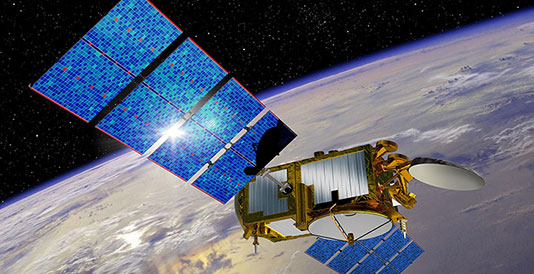 February 12, 2018 (Source: USF) - Twenty-five years of satellite data prove climate models are correct in predicting that sea levels will rise at an increasing rate. In a new study published in the journal Proceedings of the National Academy of Sciences, researchers found that since 1993, ocean waters have moved up the shore by almost 1 millimeter per decade. That’s on top of the 3 millimeter steady annual increase. This acceleration means we’ll gain an additional millimeter per year for each of the coming decades, potentially doubling what would happen to the sea level by 2100 if the rate of increase was constant.
February 12, 2018 (Source: USF) - Twenty-five years of satellite data prove climate models are correct in predicting that sea levels will rise at an increasing rate. In a new study published in the journal Proceedings of the National Academy of Sciences, researchers found that since 1993, ocean waters have moved up the shore by almost 1 millimeter per decade. That’s on top of the 3 millimeter steady annual increase. This acceleration means we’ll gain an additional millimeter per year for each of the coming decades, potentially doubling what would happen to the sea level by 2100 if the rate of increase was constant.
“The acceleration predicted by the models has now been detected directly from the observations. I think this is a game-changer as far as the climate change discussion goes,” said co-author Gary Mitchum, PhD, associate dean and professor at the University of South Florida College of Marine Science. “For example, the Tampa Bay area has been identified as one of 10 most vulnerable areas in the world to sea level rise and the increasing rate of rise is of great concern.”
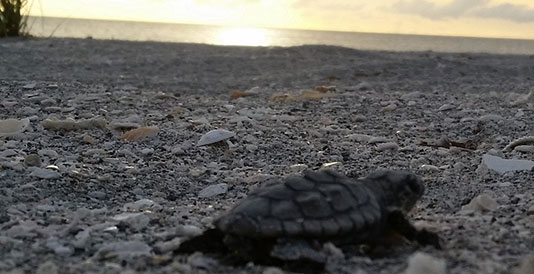 February 8, 2018 (Source: FAU) - Who’s your daddy? No, it’s not a TV clip from “The Jerry Springer Show” to identify who the “real” father is. Rather, it is a groundbreaking study of sea turtle nests and hatchlings using paternity tests to uncover “who are your daddies?”
February 8, 2018 (Source: FAU) - Who’s your daddy? No, it’s not a TV clip from “The Jerry Springer Show” to identify who the “real” father is. Rather, it is a groundbreaking study of sea turtle nests and hatchlings using paternity tests to uncover “who are your daddies?”
The study conducted by researchers at Florida Atlantic University and published in PLOS One , is the first to document multiple paternity in loggerhead sea turtle nests in southwest Florida. What started out as a study on female sea turtle promiscuity – females can have multiple partners and can store sperm for more than three months after mating events – is proving to be very good news for this female-biased species facing rising risks of extinction due to climate change.
Due to their accessibility, nesting female sea turtles, nest success, and hatchlings are frequently examined and used for demographic studies and population models (key areas for the management of imperiled species). Yet, there is very limited understanding of the proportion of adult males and males approaching sexual maturity in any sea turtle population. Consequently, male sea turtles’ reproductive behavior is poorly understood and adult sex ratio cannot be estimated directly.
“Studying sex ratios of adult sea turtles in the ocean is logistically difficult because they are widely distributed and males are especially difficult to access because they rarely come to land,” said Jacob Lasala, corresponding author of the study and a Ph.D. student working with Jeanette Wyneken, Ph.D., co-author and a professor in the Department of Biological Sciences at FAU’s Charles E. Schmidt College of Science. “We decided to use a different approach and measure ‘breeding sex ratios’ using genotyping to examine the number of male sea turtles that contribute to nests.”
 February 5, 2018 (Source: USF) - Researchers at the University of South Florida have offered a deeper understanding of climate change effects on animal phenology in their study, "A global synthesis of animal phenological responses to climate change", published this week in Nature Climate Change.
February 5, 2018 (Source: USF) - Researchers at the University of South Florida have offered a deeper understanding of climate change effects on animal phenology in their study, "A global synthesis of animal phenological responses to climate change", published this week in Nature Climate Change.
By examining more than a thousand records of these phenological shifts dating back to the 1950s, the study revealed that various taxa, like insects, birds, amphibians and mammals, are shifting their seasonal activities at different rates in response to a changing climate.
“We found that cold-blooded species and those with small body sizes are shifting their phenological activities faster, or track changing climates more effectively, than warm-blooded or large-bodied species,” said the study’s lead author Jeremy Cohen, PhD, a postdoctoral researcher in the USF Department of Integrative Biology. “These differences could potentially cause mismatches between interacting species, such as migrating birds and their prey.”
The study also provides the first evidence that different locations have different drivers of climate change-induced phenological shifts. For example, at temperate latitudes, multidecadal trends in temperature were associated with phenological shifts, whereas at tropical latitudes, it was trends in precipitation. Jason Rohr, PhD, a USF professor and co-author of the study, explained that these patterns are sensible because seasonality is generally driven by temperature in temperate regions and rainfall in tropical regions.
 February 5, 2018 (Source: FIU) - As sea levels continue to rise, more areas of the coastal Everglades will be susceptible to salt water intrusion, according to a new FIU study.
February 5, 2018 (Source: FIU) - As sea levels continue to rise, more areas of the coastal Everglades will be susceptible to salt water intrusion, according to a new FIU study.
Sea levels rose 2.2 centimeters annually from 2011 to 2015, according to scientists in FIU’s Southeast Environmental Research Center and FIU’s Sea Level Solutions Center. In 2012, sea levels rose 10 centimeters in the dry season months of December to May and have not subsided. Many factors contributed to the drastic increase in 2012, including melting ice sheets, a strong La Niña season in 2011, and slow ocean currents that allowed sea water to pile up along coastlines. Parts of the coastal Everglades that were once flooded by sea water about 70 percent of the time are now covered by sea water 90 percent of the time.
“Salt water intrudes farther inland when there is a small difference between Everglades fresh water levels and sea level,” said Shimelis Dessu, postdoctoral research associate in the Southeast Environmental Research Center and lead author of the paper. “Salinity is an indicator of the coastal Florida Everglades’ health.”
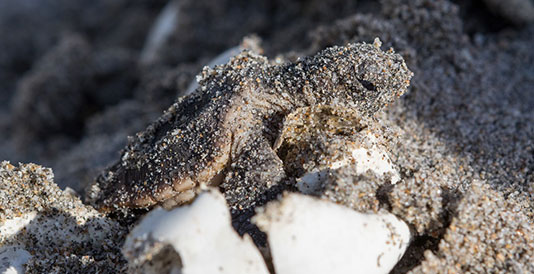 January 22, 2018 (Source: FAU) - Alarming results from a recent gender ratio study revealed that 99 percent of young green turtles from Australia’s Northern Great Barrier Reef are female and that male sea turtles are disappearing. Closer to home, researchers from Florida Atlantic University have documented a similar trend in sea turtle hatchlings in southeast Florida. Since 2002, they have studied sea turtles in Palm Beach County and discovered that 97 to 100 percent of the hatchlings have been female. In a study published in Zoology , FAU researchers are the first to show why and how moisture conditions inside the nest affect the development and sex ratios of turtle embryos. They are the first to estimate sex ratios using a male-specific, transcriptional molecular marker Sox9, a marker of testis development in sea turtles and freshwater turtles. The researchers found that the coolest and the wettest substrates produce 100 percent males compared to 42 percent males from the warmest and driest treatment. They also found that embryonic growth appears to be more sensitive to temperature at earlier stages of development and to moisture at later stages. “During incubation, the turtle embryo grows inside the nest from a few cells to a fully formed and independent organism at hatching,” said Jeanette Wyneken, Ph.D., author of the study and a professor of biological sciences in FAU’s Charles E. Schmidt College of Science. “For proper development, embryos require an appropriate range of temperature, moisture, salinity, and respiratory gases.”
January 22, 2018 (Source: FAU) - Alarming results from a recent gender ratio study revealed that 99 percent of young green turtles from Australia’s Northern Great Barrier Reef are female and that male sea turtles are disappearing. Closer to home, researchers from Florida Atlantic University have documented a similar trend in sea turtle hatchlings in southeast Florida. Since 2002, they have studied sea turtles in Palm Beach County and discovered that 97 to 100 percent of the hatchlings have been female. In a study published in Zoology , FAU researchers are the first to show why and how moisture conditions inside the nest affect the development and sex ratios of turtle embryos. They are the first to estimate sex ratios using a male-specific, transcriptional molecular marker Sox9, a marker of testis development in sea turtles and freshwater turtles. The researchers found that the coolest and the wettest substrates produce 100 percent males compared to 42 percent males from the warmest and driest treatment. They also found that embryonic growth appears to be more sensitive to temperature at earlier stages of development and to moisture at later stages. “During incubation, the turtle embryo grows inside the nest from a few cells to a fully formed and independent organism at hatching,” said Jeanette Wyneken, Ph.D., author of the study and a professor of biological sciences in FAU’s Charles E. Schmidt College of Science. “For proper development, embryos require an appropriate range of temperature, moisture, salinity, and respiratory gases.”
(Photo credit: Jay Paredes)
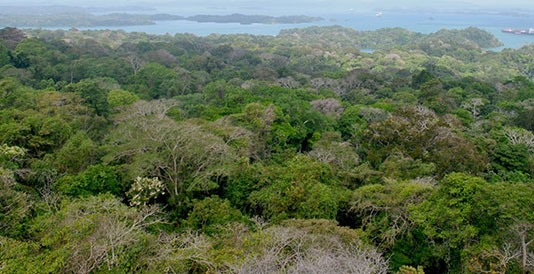 January 19, 2018 (Source: FSU) - New research from a Florida State University scientist has revealed a surprising relationship between surging atmospheric carbon dioxide and flower blooms in a remote tropical forest. FSU researchers studying the rich tropical forests of Panama’s Barro Colorado Island found that climbing rates of carbon dioxide have set the stage for a multidecade increase in overall flower production. The findings were outlined in a paper published in the journal Global Change Biology. “It’s really remarkable,” said Assistant Professor of Geography Stephanie Pau, who led the study. “Over the past several decades, we’ve seen temperatures warming and carbon dioxide increasing, and our study found that this tropical forest has responded to that increase by producing more flowers.”
January 19, 2018 (Source: FSU) - New research from a Florida State University scientist has revealed a surprising relationship between surging atmospheric carbon dioxide and flower blooms in a remote tropical forest. FSU researchers studying the rich tropical forests of Panama’s Barro Colorado Island found that climbing rates of carbon dioxide have set the stage for a multidecade increase in overall flower production. The findings were outlined in a paper published in the journal Global Change Biology. “It’s really remarkable,” said Assistant Professor of Geography Stephanie Pau, who led the study. “Over the past several decades, we’ve seen temperatures warming and carbon dioxide increasing, and our study found that this tropical forest has responded to that increase by producing more flowers.”
 January 8, 2018 (Source: FIU/CASE News) - FIU Department of Biological Sciences professor Philip Stoddard was recently featured in an article by The Center for Public Integrity regarding the effects of climate change on the state of Florida.
January 8, 2018 (Source: FIU/CASE News) - FIU Department of Biological Sciences professor Philip Stoddard was recently featured in an article by The Center for Public Integrity regarding the effects of climate change on the state of Florida.
Philip Stoddard and his wife are saving money to prepare for the day climate problems render their home worthless and force them out. Stoddard lives three miles inland in an area that would be largely submerged — along with much of South Florida — under what the federal government considers a worst-case but worryingly plausible scenario by the end of the century. Some Florida scientists expect even higher sea-level rise. Stoddard is focused on keeping the city livable as long as possible, which means battling a faster-arriving consequence of a warming world.
Stoddard, looking into fixes, sees a need for hard conversations with residents of his city’s lowest-lying neighborhoods. Do they want to pay for expensive upgrades or risk owning homes without working toilets? He sees a future where some communities get ahead of climate problems and others are overwhelmed. Meanwhile, he said, his utility company keeps building gas plants that emit even more of the carbon pollution fueling this slow-motion tragedy.
“It’s going to cost more money, it’s going to pollute the environment — it’s like, why are they doing it?” said Stoddard, a fierce FPL critic. The answer, in his view: “They own natural gas.”
Read the full article for more information on how Florida is affected by climate change.
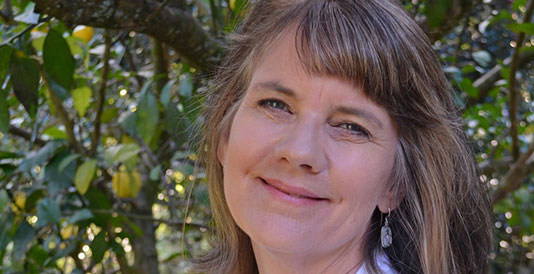 January 6, 2018 (Source: UF/Bob Graham Center) - Award-winning journalist and author Cynthia Barnett is joining the University of Florida's Bob Graham Center for Public Service as Environmental Fellow in Residence. Barnett is an environmental journalist who has covered water and climate stories worldwide, from the decline in Florida's signature springs, to epic drought in California and Australia, to the rainiest place on Earth in Cherrapunji, India. She is the author of three books on water, including her latest Rain: A Natural and Cultural History, longlisted for the National Book Award, a finalist for the PEN/E.O. Wilson Award for Literary Science writing, winner of the Gold medal in the Florida Book Awards for best general nonfiction and named among the best nonfiction books of 2015 by NPR’s Science Friday, the Boston Globe, the Tampa Bay Times, the Miami Herald and others. Barnett's appointment is shared with UF’s College of Journalism and Communications, where she is Environmental Journalist in Residence and oversees student environmental reporting projects such as award-winning Blue Ether and the recent series Energy Burden. She will continue to teach in CJC and will begin teaching courses for the Graham Center’s public leadership minor. Barnett will also help lead student environmental initiatives and team up across disciplines with UF faculty and students who are working to improve public understanding of complex environmental issues such as climate change.
January 6, 2018 (Source: UF/Bob Graham Center) - Award-winning journalist and author Cynthia Barnett is joining the University of Florida's Bob Graham Center for Public Service as Environmental Fellow in Residence. Barnett is an environmental journalist who has covered water and climate stories worldwide, from the decline in Florida's signature springs, to epic drought in California and Australia, to the rainiest place on Earth in Cherrapunji, India. She is the author of three books on water, including her latest Rain: A Natural and Cultural History, longlisted for the National Book Award, a finalist for the PEN/E.O. Wilson Award for Literary Science writing, winner of the Gold medal in the Florida Book Awards for best general nonfiction and named among the best nonfiction books of 2015 by NPR’s Science Friday, the Boston Globe, the Tampa Bay Times, the Miami Herald and others. Barnett's appointment is shared with UF’s College of Journalism and Communications, where she is Environmental Journalist in Residence and oversees student environmental reporting projects such as award-winning Blue Ether and the recent series Energy Burden. She will continue to teach in CJC and will begin teaching courses for the Graham Center’s public leadership minor. Barnett will also help lead student environmental initiatives and team up across disciplines with UF faculty and students who are working to improve public understanding of complex environmental issues such as climate change.
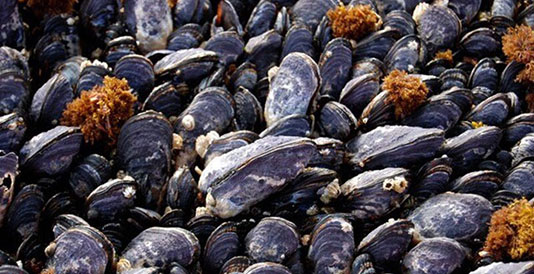 January 5, 2018 (Source: FSU) - Accelerating ocean acidification could be transforming the fundamental structure of California mussel shells, according to a new report from a Florida State University-led team of scientists. For thousands of years, California mussel shells have shared a relatively uniform mineralogical makeup — long, cylindrical calcite crystals ordered in neat vertical rows with crisp, geometric regularity. But in a study published this week in the journal Global Change Biology, researchers suggest that escalating rates of ocean acidification are shaking up that shell mineralogy on its most basic structural levels. “What we’ve seen in more recent shells is that the crystals are small and disoriented,” said Assistant Professor of Biological Science Sophie McCoy, who led the study. “These are significant changes in how these animals produce their shells that can be tied to a shifting ocean chemistry.”
January 5, 2018 (Source: FSU) - Accelerating ocean acidification could be transforming the fundamental structure of California mussel shells, according to a new report from a Florida State University-led team of scientists. For thousands of years, California mussel shells have shared a relatively uniform mineralogical makeup — long, cylindrical calcite crystals ordered in neat vertical rows with crisp, geometric regularity. But in a study published this week in the journal Global Change Biology, researchers suggest that escalating rates of ocean acidification are shaking up that shell mineralogy on its most basic structural levels. “What we’ve seen in more recent shells is that the crystals are small and disoriented,” said Assistant Professor of Biological Science Sophie McCoy, who led the study. “These are significant changes in how these animals produce their shells that can be tied to a shifting ocean chemistry.”
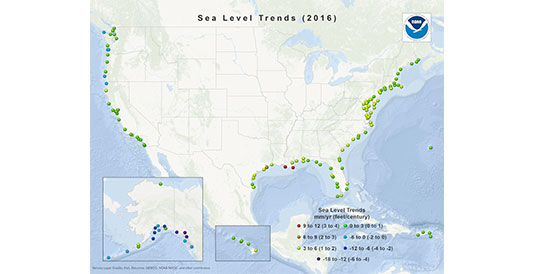 January 1, 2018 (Source: The Conversation) - Arnoldo Valle-Levinson and Andrea Dutton (UF) have published an article in The Conversation describing an "x-factor" in coast flooding: natural climate patterns that create hot spots of rapid sea level rise. In a study they co-authored with colleague Jon Martin (UF), they showed that two converging natural climate processes created a “hot spot” from Cape Hatteras, North Carolina to Miami where sea levels rose six times faster than the global average between 2011 and 2015. They also showed that such hot spots have occurred at other points along the Eastern Seaboard over the past century. Now they see indications that one is developing in Texas and Louisiana, where it likely amplified flooding during Harvey – and could make future coastal storms more damaging.
January 1, 2018 (Source: The Conversation) - Arnoldo Valle-Levinson and Andrea Dutton (UF) have published an article in The Conversation describing an "x-factor" in coast flooding: natural climate patterns that create hot spots of rapid sea level rise. In a study they co-authored with colleague Jon Martin (UF), they showed that two converging natural climate processes created a “hot spot” from Cape Hatteras, North Carolina to Miami where sea levels rose six times faster than the global average between 2011 and 2015. They also showed that such hot spots have occurred at other points along the Eastern Seaboard over the past century. Now they see indications that one is developing in Texas and Louisiana, where it likely amplified flooding during Harvey – and could make future coastal storms more damaging.
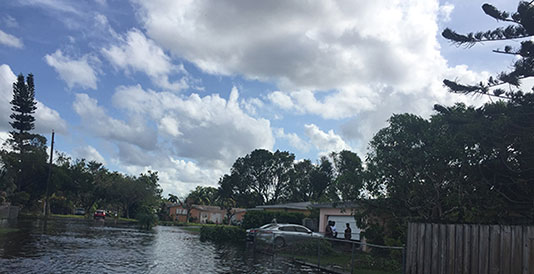 December 13, 2017 (Source: FIU) - South Florida raises groundwater levels to fight salt water intrusion, the threat of flooding from within will only increase, according to FIU research. Current groundwater levels in South Florida are a major contributor to inland flood damages, especially during the wet season or extreme rain events. Traditional flood models account for drainage systems, rivers, streams and canals but do not account for the groundwater beneath our feet. FIU hydrologist Michael Sukop has released a model that focuses on South Florida’s groundwater as a cause of flooding. “Many current flood models treat the land as an impermeable surface when, in fact, South Florida’s land surface is highly permeable and the water table is very close to the surface,” said Sukop, a professor in FIU’s Department of Earth and Environment. “Our model offers a different way of understanding and addressing the flooding problem. When it rains hard enough, or when tides are high, the water table can come all the way to the surface and cause flooding.”
December 13, 2017 (Source: FIU) - South Florida raises groundwater levels to fight salt water intrusion, the threat of flooding from within will only increase, according to FIU research. Current groundwater levels in South Florida are a major contributor to inland flood damages, especially during the wet season or extreme rain events. Traditional flood models account for drainage systems, rivers, streams and canals but do not account for the groundwater beneath our feet. FIU hydrologist Michael Sukop has released a model that focuses on South Florida’s groundwater as a cause of flooding. “Many current flood models treat the land as an impermeable surface when, in fact, South Florida’s land surface is highly permeable and the water table is very close to the surface,” said Sukop, a professor in FIU’s Department of Earth and Environment. “Our model offers a different way of understanding and addressing the flooding problem. When it rains hard enough, or when tides are high, the water table can come all the way to the surface and cause flooding.”
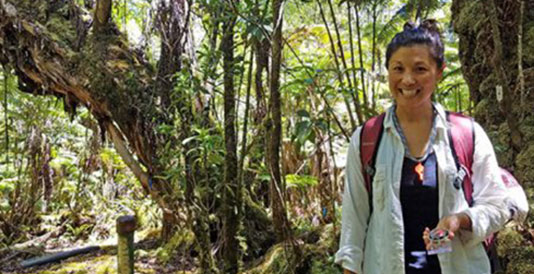 December 7, 2017 (Source: FSU) - Stephanie Pau (FSU) has been awarded a National Geographic grant for her research on tropical forest phenology and climate change by the organization’s Committee for Research and Exploration. Phenology, often referred to as “nature’s calendar,” is the study of periodic plant and animal life cycle events, such as the timing of plant bud bursts or bird migrations, and how these are influenced by seasonal and interannual variations in climate, as well as habitat factors, such as elevation. “Changes in plant phenology have provided some of the best examples of climate change impacts on species and ecosystems,” Pau said. “However, most of this evidence comes from temperate or high-latitude ecosystems. In the tropics, the year-round growing season and the diversity of species exhibiting distinct phenological strategies complicates our understanding of plant phenology.” Pau’s project, “Tropical Forest Phenology in a Changing Climate,” seeks to identify the phenological diversity of plants in two contrasting tropical forest habitats on the island of Hawai‘i, part of a biodiversity hotspot. The proposed research will use monthly field collections of seeds and leaves that fall to the ground, known as litterfall, linked with state-of-the-art satellite observations, which provide repeat wall-to-wall coverage of the Earth’s changing surface.
December 7, 2017 (Source: FSU) - Stephanie Pau (FSU) has been awarded a National Geographic grant for her research on tropical forest phenology and climate change by the organization’s Committee for Research and Exploration. Phenology, often referred to as “nature’s calendar,” is the study of periodic plant and animal life cycle events, such as the timing of plant bud bursts or bird migrations, and how these are influenced by seasonal and interannual variations in climate, as well as habitat factors, such as elevation. “Changes in plant phenology have provided some of the best examples of climate change impacts on species and ecosystems,” Pau said. “However, most of this evidence comes from temperate or high-latitude ecosystems. In the tropics, the year-round growing season and the diversity of species exhibiting distinct phenological strategies complicates our understanding of plant phenology.” Pau’s project, “Tropical Forest Phenology in a Changing Climate,” seeks to identify the phenological diversity of plants in two contrasting tropical forest habitats on the island of Hawai‘i, part of a biodiversity hotspot. The proposed research will use monthly field collections of seeds and leaves that fall to the ground, known as litterfall, linked with state-of-the-art satellite observations, which provide repeat wall-to-wall coverage of the Earth’s changing surface.
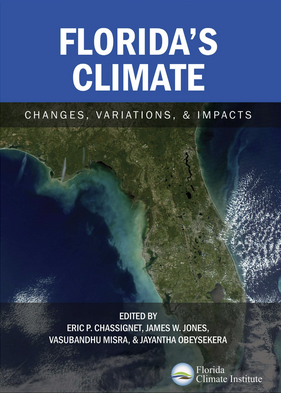
 November 17, 2017 - Dr. Andrea Dutton, Assistant Professor of Geology at the University of Florida, has been named one of Rolling Stone Magazine's "25 People Shaping the Future in Tech, Science, Medicine, Activism and More." Dr. Dutton studies sea level reconstruction over glacial-interglacial timescales with an emphasis on establishing the behavior of sea level and ice sheets during interglacial periods to better inform us about future sea-level rise. "I think of myself as a detective," she says. "By understanding what happened in the past, we can get a better understanding of what might happen in the future."
November 17, 2017 - Dr. Andrea Dutton, Assistant Professor of Geology at the University of Florida, has been named one of Rolling Stone Magazine's "25 People Shaping the Future in Tech, Science, Medicine, Activism and More." Dr. Dutton studies sea level reconstruction over glacial-interglacial timescales with an emphasis on establishing the behavior of sea level and ice sheets during interglacial periods to better inform us about future sea-level rise. "I think of myself as a detective," she says. "By understanding what happened in the past, we can get a better understanding of what might happen in the future."
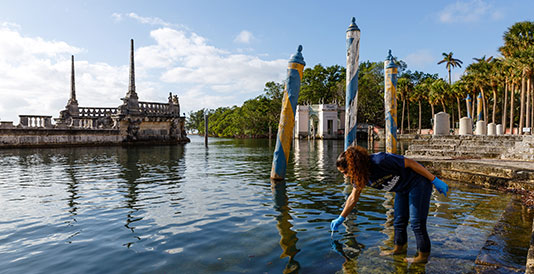 November 9, 2017 (Source: FIU) - FIU deployed more than 100 citizen scientists to investigate whether flooding from the most recent King Tide in October was bringing saltwater or freshwater inland to urban areas. The findings could provide critical clues as to why such unusual flooding is occurring in South Florida, what areas are most at-risk and whether the frequency of these floods could be increasing. The community project was organized by the FIU Sea Level Solutions Center in the Institute of Water and Environment along with the School of Communication + Journalism as part of an annual Sea Level Solutions Day at Vizcaya Gardens Garage.
November 9, 2017 (Source: FIU) - FIU deployed more than 100 citizen scientists to investigate whether flooding from the most recent King Tide in October was bringing saltwater or freshwater inland to urban areas. The findings could provide critical clues as to why such unusual flooding is occurring in South Florida, what areas are most at-risk and whether the frequency of these floods could be increasing. The community project was organized by the FIU Sea Level Solutions Center in the Institute of Water and Environment along with the School of Communication + Journalism as part of an annual Sea Level Solutions Day at Vizcaya Gardens Garage.
"We simply could not do this science without citizen engagement, to reach the number of sites we do all at the same time, nor do we have a better opportunity to share the latest science and engage members of our community in sea level solutions," said Tiffany Troxler, director of the FIU Sea Level Solutions Center. “With current technologies, flood modeling projections are not as precise nor accurate as “on-the-ground” measurements that our citizens work together to produce.”
 November 8, 2017 - For once in our field, breaking records was a good thing. At least that is the case for one soon to be graduate student. After eight semesters of the maximum course-load, the effort has afforded Russell Anderson the highest number of graduate certificates obtained at both the University and State University System of Florida levels.
November 8, 2017 - For once in our field, breaking records was a good thing. At least that is the case for one soon to be graduate student. After eight semesters of the maximum course-load, the effort has afforded Russell Anderson the highest number of graduate certificates obtained at both the University and State University System of Florida levels.
We interviewed Russell to get some insights into his accomplishments. He returned to pursue advanced education after leaving the professional organizing world in search of ‘bigger pictures and greater truths’. Now, he is leaving the University of Florida with a Masters in Sustainable Development Practice, a concentration in Climate Science and six graduate certificates (from four UF colleges) that include: Latin American Studies, Tropical Conservation and Development, Emergency Services - Disaster Preparedness, Agriculture Education Leadership, Natural Resource Policy Administration, and Ecological Restoration; In addition to performing extensive fieldwork across Belize and Florida coastal (terrestrial and marine) environments.
“My reasoning for sharing this personal accolade was not to brag or boast. Furthermore, I encourage those that may read this, to avoid such endeavors, if you value time, money and sanity. I wanted to share my story to encourage us all to think BIG, capitalize on your networks, and realize the (rapidly approaching) implications of today’s actions on tomorrow’s world. We all have a role in building solutions to our future challenges.“
“It has always been a knack of mine to find the webs of significance and limitations of our respective silos of experiences. Ultimately, that is what drove my desire to understand the natural world, society, and our collective realities to come.” It is only fitting that his next steps include the launch of a transnational sustainable development consortium, focused on impact planning for 2050. ‘We are currently in the process of transferring materials into 14 languages across 22 nations and planning on launching in January 2018,” said Russell.
“During my time at the University of Florida, it has been my privilege to learn from some of the most dynamic and informed educators in the country. The climate science concentration, under the direction of Carolyn Cox of the Florida Climate Institute, was instrumental in my success. I encourage my peers and colleagues to check out the Climate Science Concentration and some of the many graduate programs available.”
“It is a big and complex world out there and it’s only going to get weirder… The more we know the better off we are. More importantly, we are all in this together! So, don’t forget to look beyond your silos and keep your networks strong. When it comes down to it, our communities and experiences are the best resources we have to foster a better tomorrow.”
Have questions or want to connect? Contact Russell at Linkedin.com/in/russ-2050/
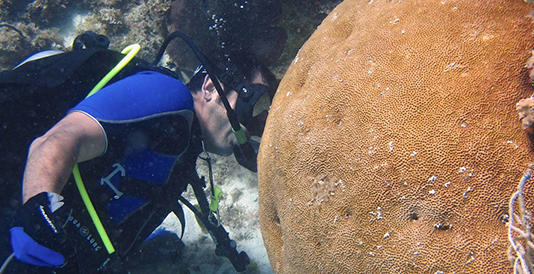 October 2017 (Source: UM) - Andrew C. Baker (UM) is big on the study of the ecology and conservation of coral reefs, with particular attention to the impact of climate change on these fragile environments. Corals in Cuba, considered to be some of most pristine in the Caribbean, may help determine how these ecosystems can survive climate change.
October 2017 (Source: UM) - Andrew C. Baker (UM) is big on the study of the ecology and conservation of coral reefs, with particular attention to the impact of climate change on these fragile environments. Corals in Cuba, considered to be some of most pristine in the Caribbean, may help determine how these ecosystems can survive climate change.
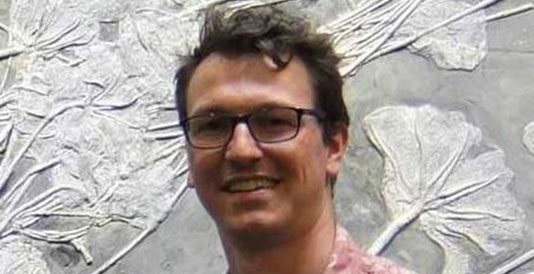 October 10, 2017 (Source: FSU) - Rising levels of carbon dioxide may have little effect on the smallest organisms that live in ocean sediment, according to a new study by a Florida State University researcher. FSU Coastal and Marine Laboratory scientist Jeroen Ingels and a team of researchers found that communities of microscopic organisms called meiofauna don’t change much when faced with both rising carbon dioxide levels and higher temperatures. That’s in contrast to larger organisms, which have previously shown to be largely affected by changes in environment. Meiofauna are miniscule invertebrates that live in both marine and fresh water environments. They are the base of the food web, so researchers are eager to learn more about how climate change may affect them.
October 10, 2017 (Source: FSU) - Rising levels of carbon dioxide may have little effect on the smallest organisms that live in ocean sediment, according to a new study by a Florida State University researcher. FSU Coastal and Marine Laboratory scientist Jeroen Ingels and a team of researchers found that communities of microscopic organisms called meiofauna don’t change much when faced with both rising carbon dioxide levels and higher temperatures. That’s in contrast to larger organisms, which have previously shown to be largely affected by changes in environment. Meiofauna are miniscule invertebrates that live in both marine and fresh water environments. They are the base of the food web, so researchers are eager to learn more about how climate change may affect them.
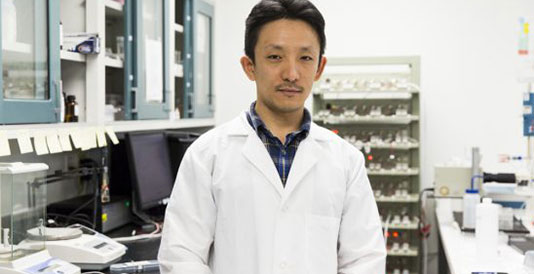 October 2, 2017 (Source: UCF) - It’s possible to produce hydrogen to power fuel cells by extracting the gas from seawater, but the electricity required to do it makes the process costly. UCF researcher Yang Yang has come up with a new hybrid nanomaterial that harnesses solar energy and uses it to generate hydrogen from seawater more cheaply and efficiently than current materials. The breakthrough could someday lead to a new source of the clean-burning fuel, ease demand for fossil fuels and boost the economy of Florida, where sunshine and seawater are abundant.
October 2, 2017 (Source: UCF) - It’s possible to produce hydrogen to power fuel cells by extracting the gas from seawater, but the electricity required to do it makes the process costly. UCF researcher Yang Yang has come up with a new hybrid nanomaterial that harnesses solar energy and uses it to generate hydrogen from seawater more cheaply and efficiently than current materials. The breakthrough could someday lead to a new source of the clean-burning fuel, ease demand for fossil fuels and boost the economy of Florida, where sunshine and seawater are abundant.












